We tend to be creatures of habit and conformity, but in the realm of tents and camping if you’re wanting to stand out from the crowd, the Nordisk Thrymheim 5 PU tent should be on your radar.
We tested this modern tipi up in Scotland, very curious as to whether the Nordisk Thrymheim 5 PU is a genuine alternative to the mainstream tunnel and dome shaped family tents that dominate camping grounds.
It turns out that it is – the Thrymheim 5 PU offers fantastic liveability and comfort while being impressively weatherproof and compact. It’s not perfect (no tent ever is) but for those wanting the most internal space for the least packed size, it’s an option to consider very seriously.
 LFTO
LFTOPros
- Remarkably spacious
- Pitches outer first
- Loads of headroom
- Multiple layouts for vestibule
- Relatively lightweight and compact
- Smaller version also available
Cons
- Only two small windows
- Pegs could be stronger
| Type | Tipi |
| Weight | 10.2kg |
| Packed size | 57 x 25cm |
| Doors | 1 |
| Vestibules | 1 |
| Inner | Polyester w/ No-See-Um mesh |
| Fly | Polyester w/ PU coating (3000mm HH) |
| Groundsheet | 150D polyester w/ PU coating (8000mm HH) |
| Poles | Aluminium |
Design and features

What’s important to understand here is that the Thrymheim 5 PU isn’t a tent adhering strictly to age old conventions – it's Tipi 2.0 as Nordisk puts it.
So, instead of a central pole, the Thrymheim 5 PU has two main poles that form an upside down ‘V’ – a setup Nordisk calls ‘Turtle Hub’. This means your internal space isn’t disrupted by a centrally positioned pole.

The internal space itself can be divided into a bedroom (a separate inner you attach) and the living area/vestibule/porch. This large vestibule can be arranged in a variety of ways, from a simple, covered setup to opening the front fully to let as much warmth and air in as possible.
In terms of materials and fabrics, the Thrymheim 5 PU flysheet, groundsheet, and inner are all made of polyester. The flysheet has a waterproof rating of 3000mm HH and the groundsheet 8000mm. The poles and pegs are all aluminium.
Pitching
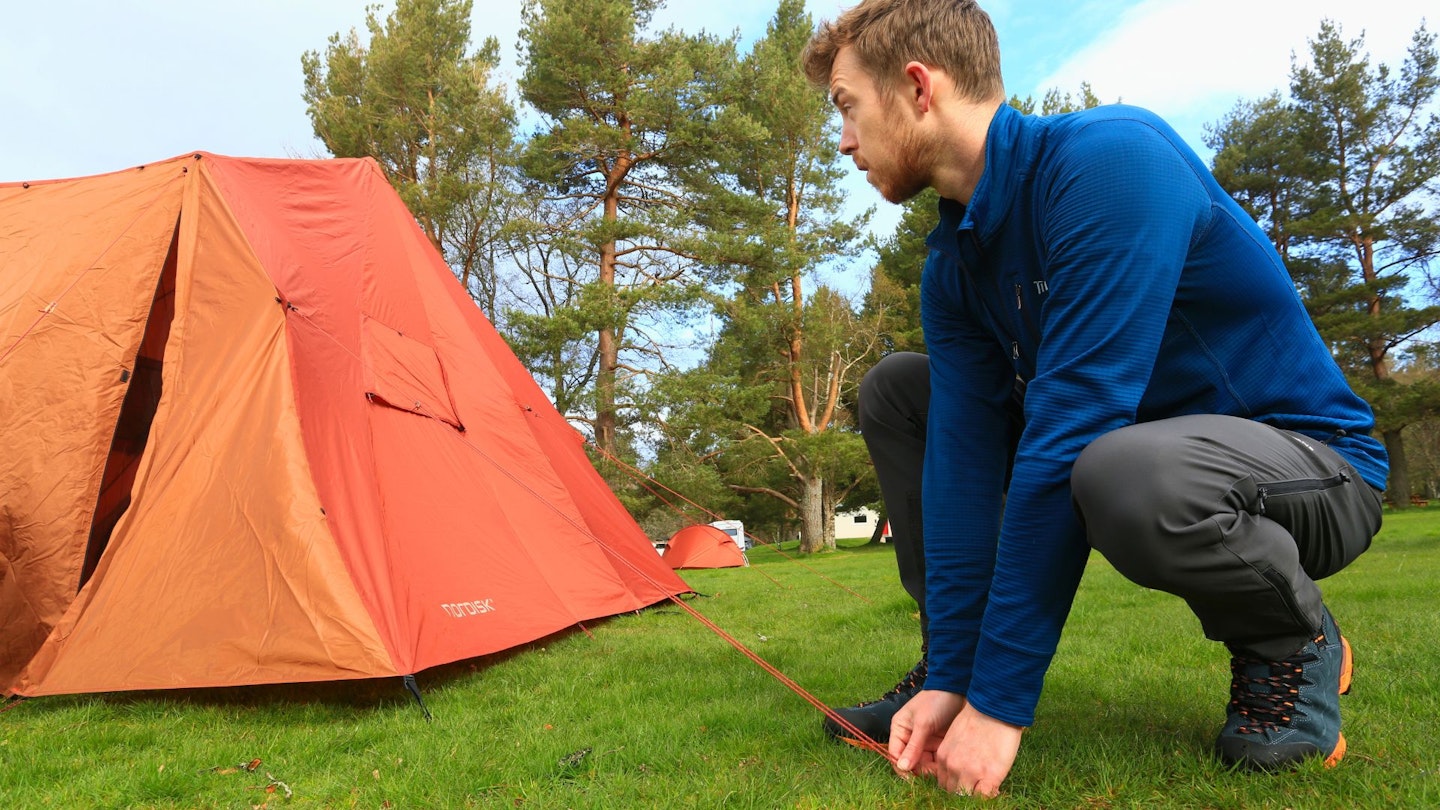
Typically, persistent wind and patches of rain don’t provide ideal conditions for an inaugural tent pitch, but it gave us a good chance to find out how easy the Thrymheim 5 PU is to erect when the weather isn’t playing ball.
Suffice to say, you need two people. When it’s balmy weather, the Thrymheim 5 PU is easy to pitch, but it’s a little bit of a battle when you’re trying to hoist the two, large main poles into position while the wind is pushing the large flysheet around like a sail. Once in position though, it’s simply a case of adjusting and guying out the tent.
One of the key things to note about pitching the Thrymheim 5 PU is that the inner is attached after the flysheet is up, which means you can keep the inner dry (put it in the car or something) while you erect the rest of the tent.
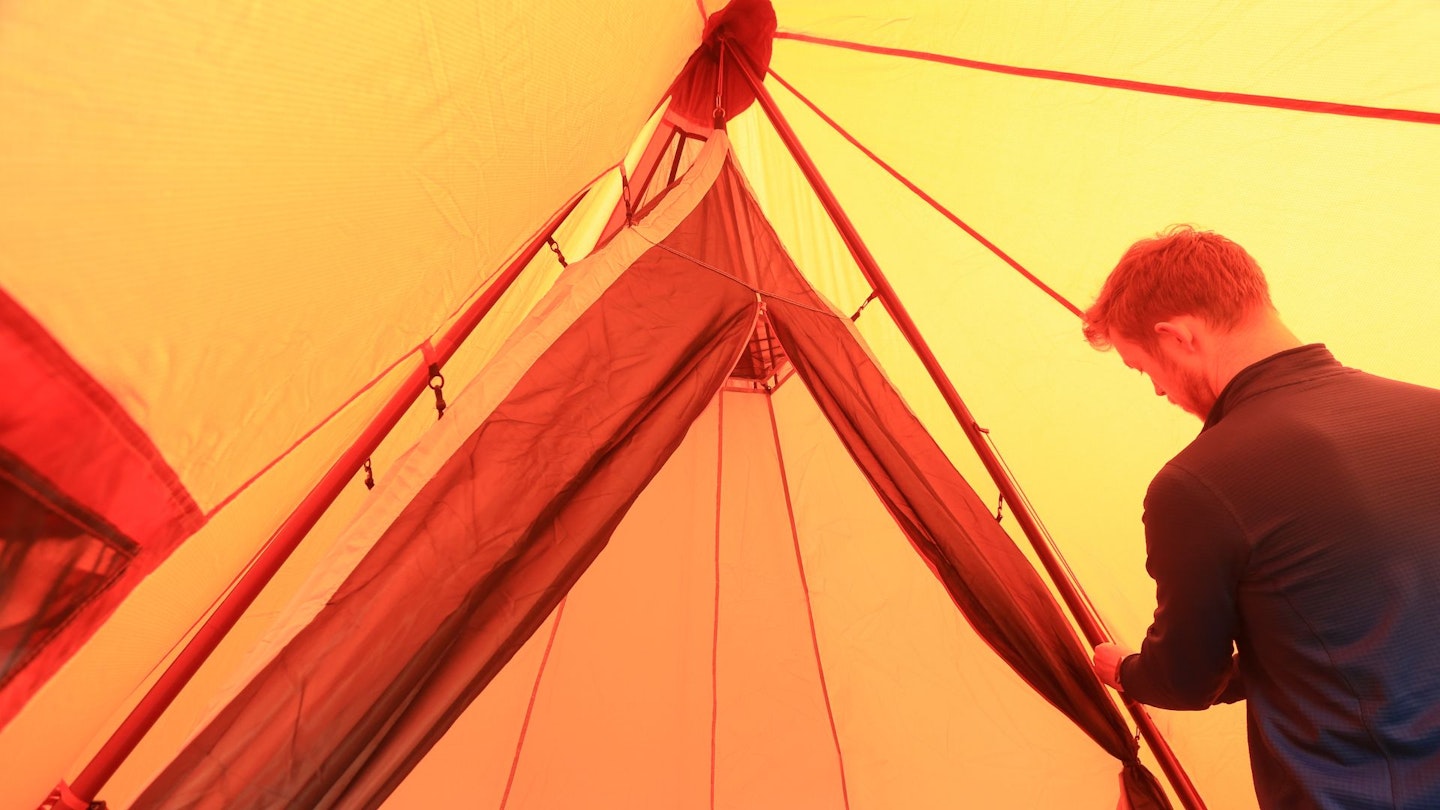
The inner is attached quite cleverly, we thought. It clips to the base and poles as expected, but to get it attached to the top (which is out of reach for pretty much everyone), you clip a carabiner attached to a line hanging from the ceiling and then pulley the inner into place.
Taking the Thrymheim 5 PU tent down is very straightforward and quick. We were also pleased to see it’s easy to fit back into the burrito-style bag.
Living and comfort
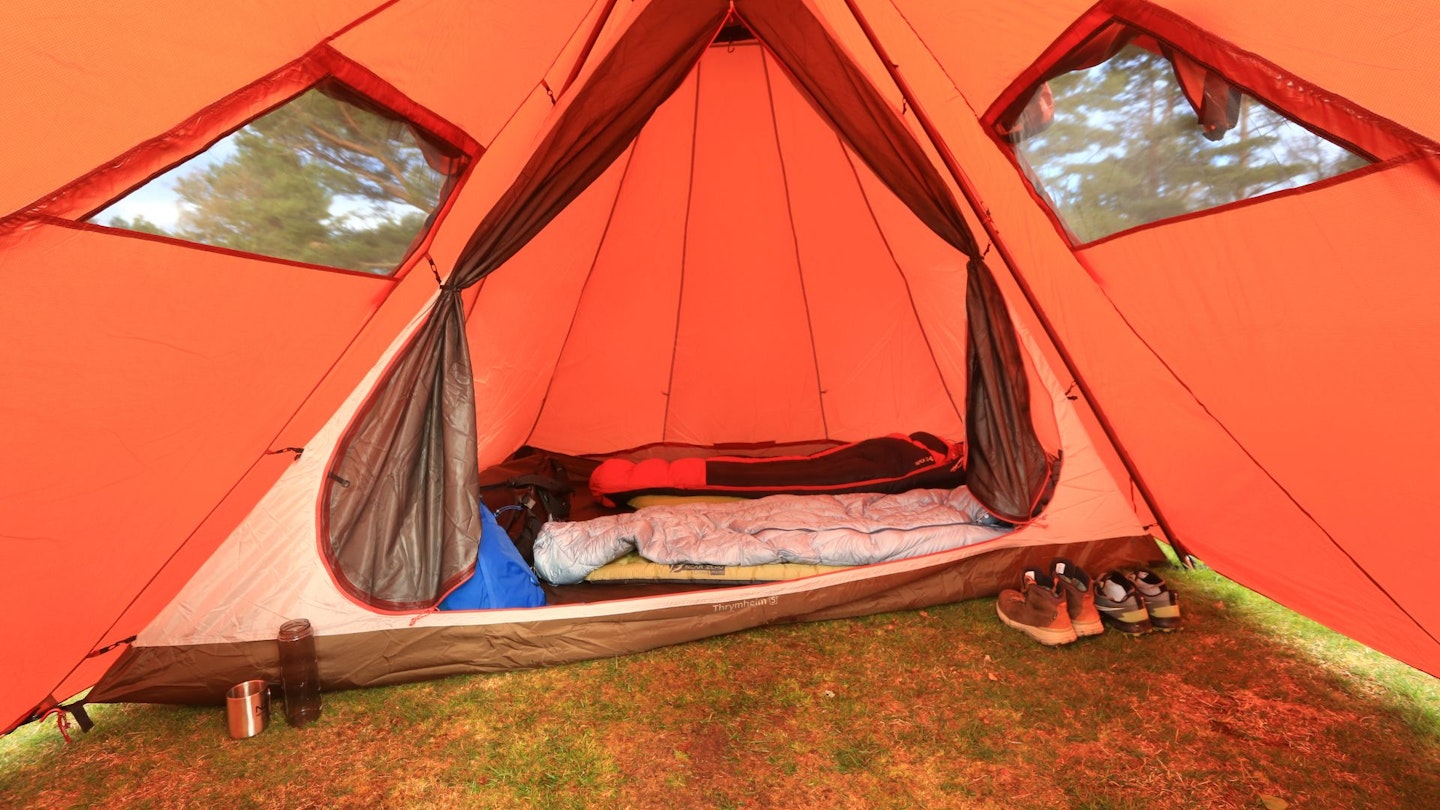
This is where the Thrymheim 5 PU really shines. At its peak (the centre of the bedroom), the Thrymheim 5 PU is over 2.5m tall, so anybody can stand upright with headroom to spare – even in most of the vestibule, despite its angled roof, which is never any lower than 1.75m.
The sense of space is tremendous considering the Thrymheim 5 PU sits on a relatively modest footprint of about 3 x 4.4m. To boost living space, Nordisk has made the bedroom inner asymmetrical, being 1.8m on one side and 2.75m on the other. This odd-shaped bedroom can fit exactly five if you use all the floor space while allowing for a bit of extra area in the vestibule.

It’s up to you how many you want to fit, but of course the fewer you have the more palatial the Thrymheim 5 PU feels. That said, even with five that tall ceiling does wonders addressing any sense of feeling cramped.
We did notice that unlike more popular tunnel-shaped tents, the Thrymheim 5 PU is lacking for windows. There are only the two small mesh openings on each side of the vestibule. Because there is no blackout fabric used the interior isn’t dark but nor does it get much natural light.

In terms of ventilation and condensation, you can open the front completely and roll up the base of the flysheet at the rear. If, however, it’s raining, you can still battle condensation by using the ventilation openings at the base of the tent, as well as adjusting the windows so that they’re covered but still open. Additionally, both the bedroom door and vestibule door have a solid and mesh panel, so privacy and ventilation can be adjusted here as required as well.
Durability and weather resistance
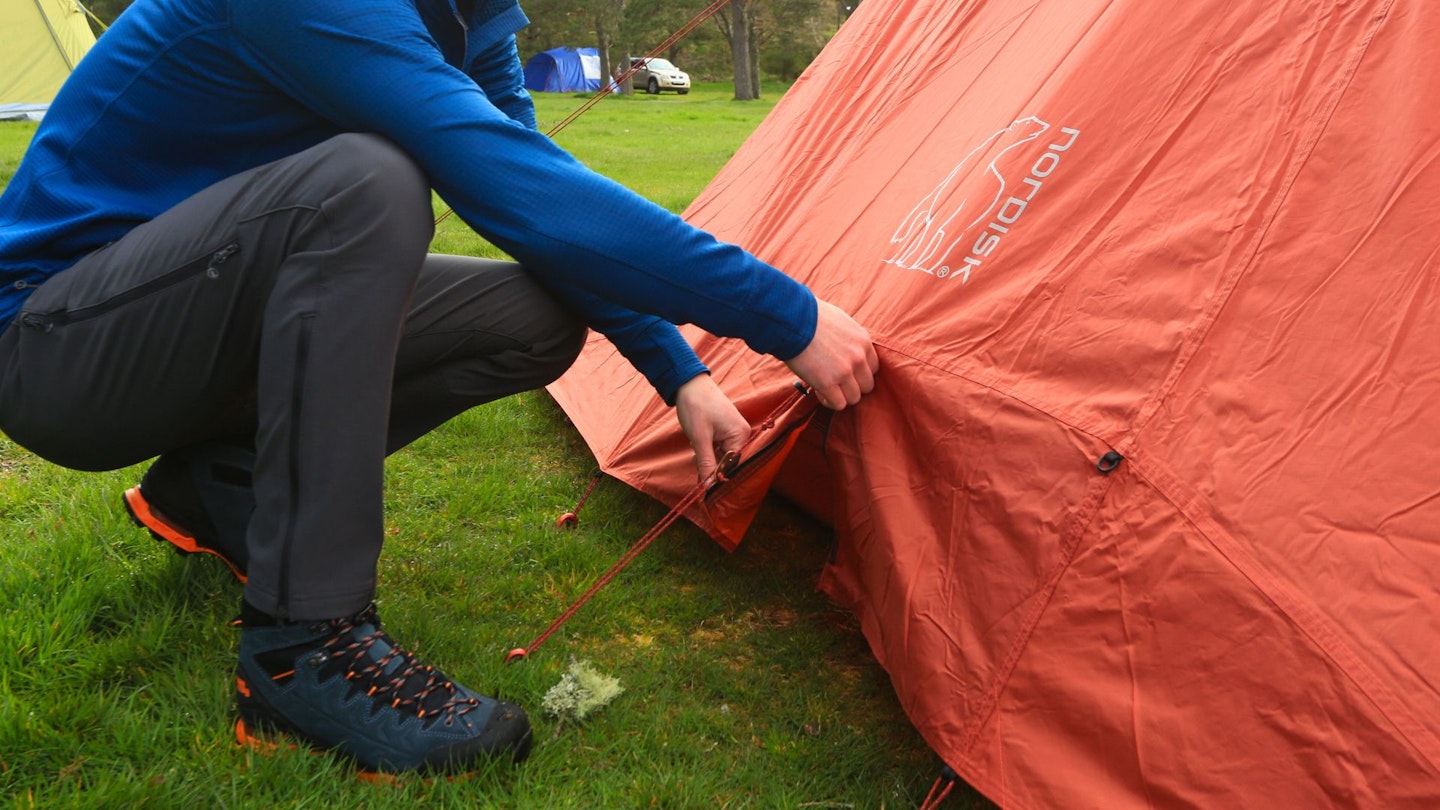
We found the Thrymheim 5 PU copes well in most conditions. It PU-coated flysheet has a decent hydrostatic head rating, and the walls are steep, which ensures rain runs off it rather than pooling.
The groundsheet also offers plenty of water resistance but if you’re pitching up somewhere for more than a couple of days we’d suggest using either the footprint or a tarpaulin underneath (it helps keep the tent cleaner as well).
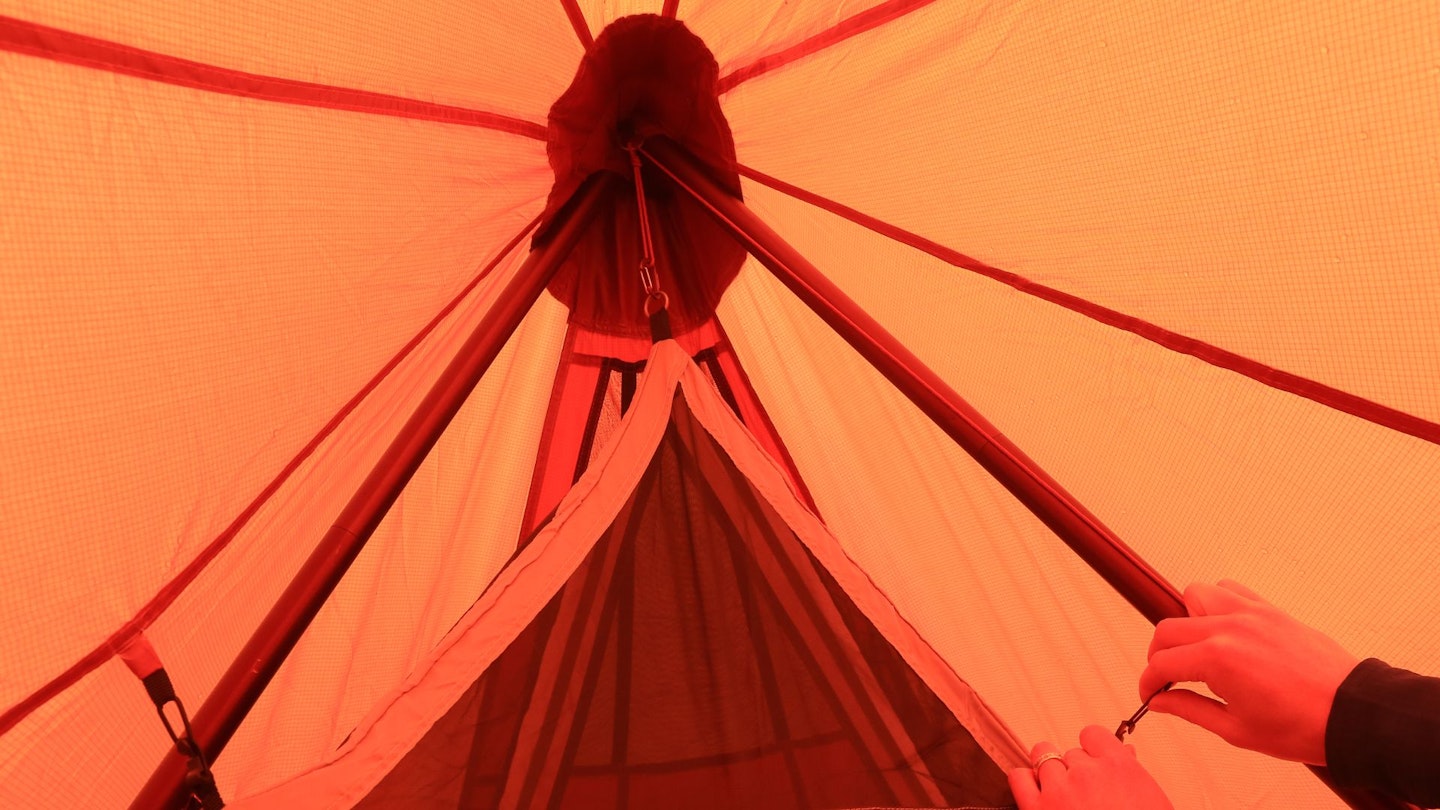
Despite its height and being a bit slab-sided, the Thrymheim 5 PU is very stable, in part thanks to its many guylines. So, to avoid excessive flapping and having to reset pegs and guylines, pitch the Thrymheim 5 PU with its back to the wind if possible in order to catch far less of it.
We liked the large aluminium poles – they were reassuringly sturdy but we thought the pegs could have been better. They’re a typical hook shape and look very cool but we bent a couple on test, and they were used in reasonably soft ground.
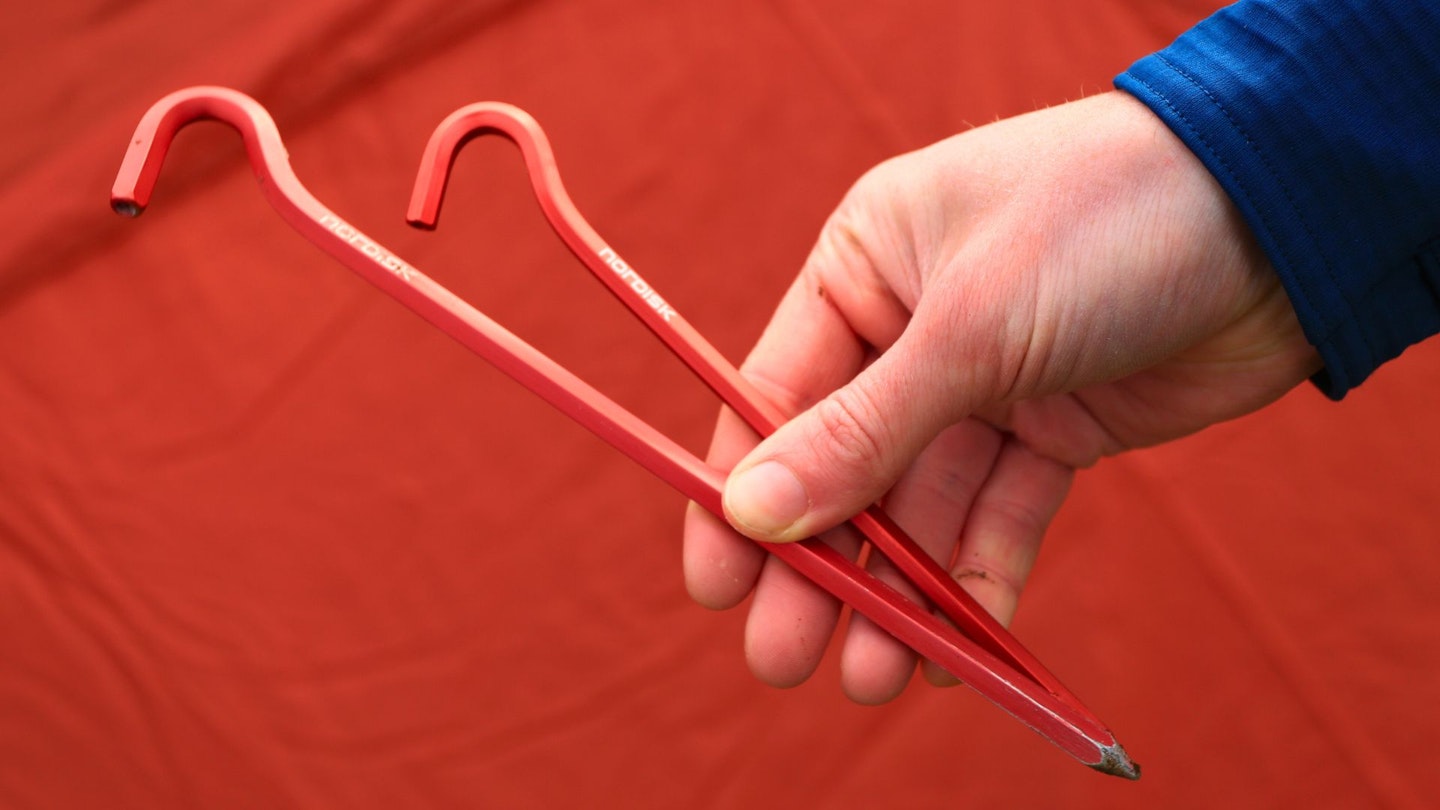
To be honest, we think steel pegs, although heavier, would be a better option. This is after all a camping tent not a backpacking tent that needs to be light enough to fit into a rucksack.
Sustainability
The strongest sustainability pillar the Thrymheim 5 PU has is its quality of construction, which helps address sustainability through longevity. To boost this further, Nordisk has a dedicated repair service for its products too.
Beyond this, there isn't a lot to shout about. While some of Nordisk's other tent models are PFC-free, the Nordisk Thrymheim 5 PU is not, unfortunately.
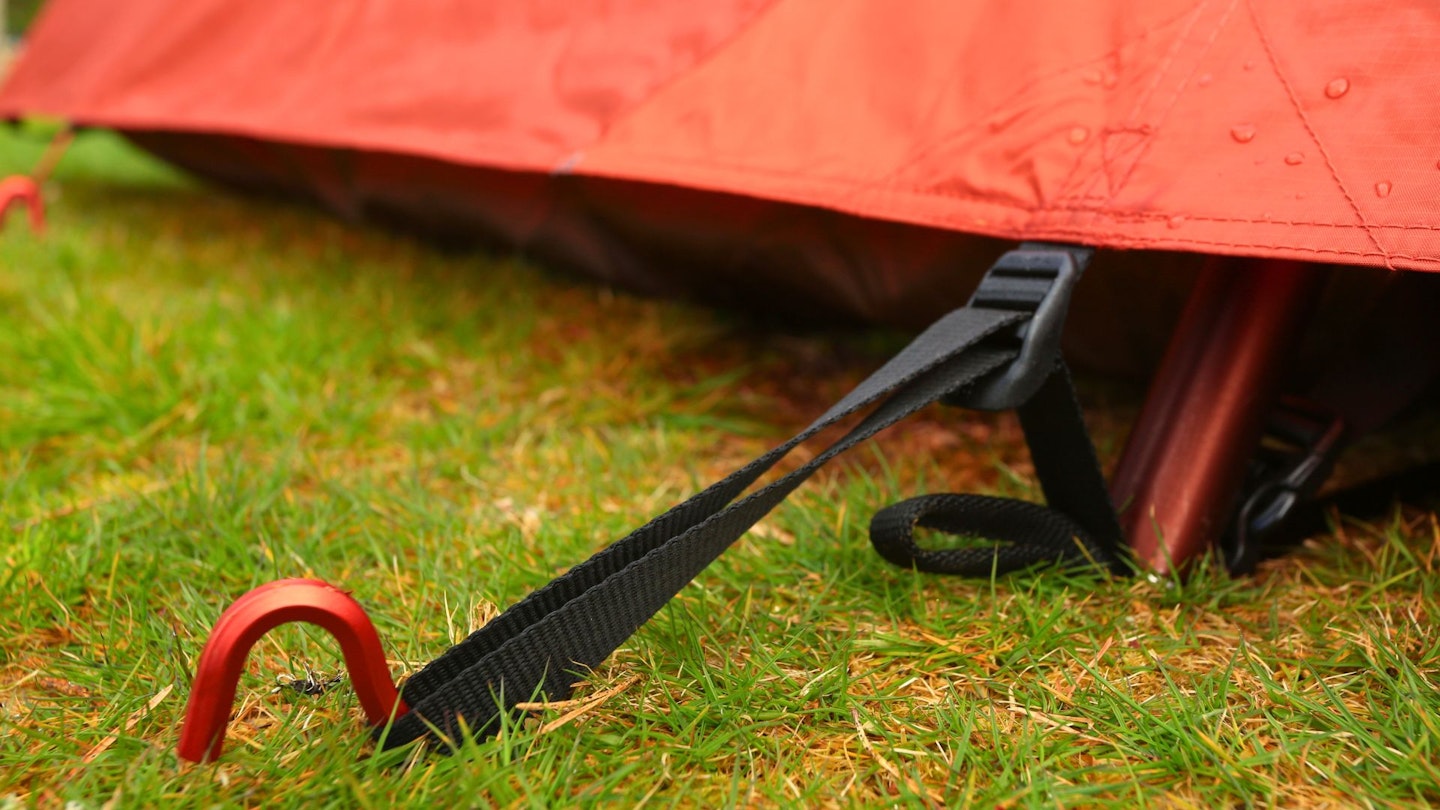
Price and competition
Given the Thrymheim 5 PU’s unique construction, it simultaneously is in a class of its own, yet can also be seen as a rival to more common tent shapes and traditional tipis alike.
Some other Scandinavian brands such as Robens make tipi tents too, but these stick to the central pole principle and we like Nordisk’s Turtle Hub approach better. Compared to popular tunnel shaped tents, the Thrymheim 5 PU offers superior headroom and a better space-to-weight ratio.
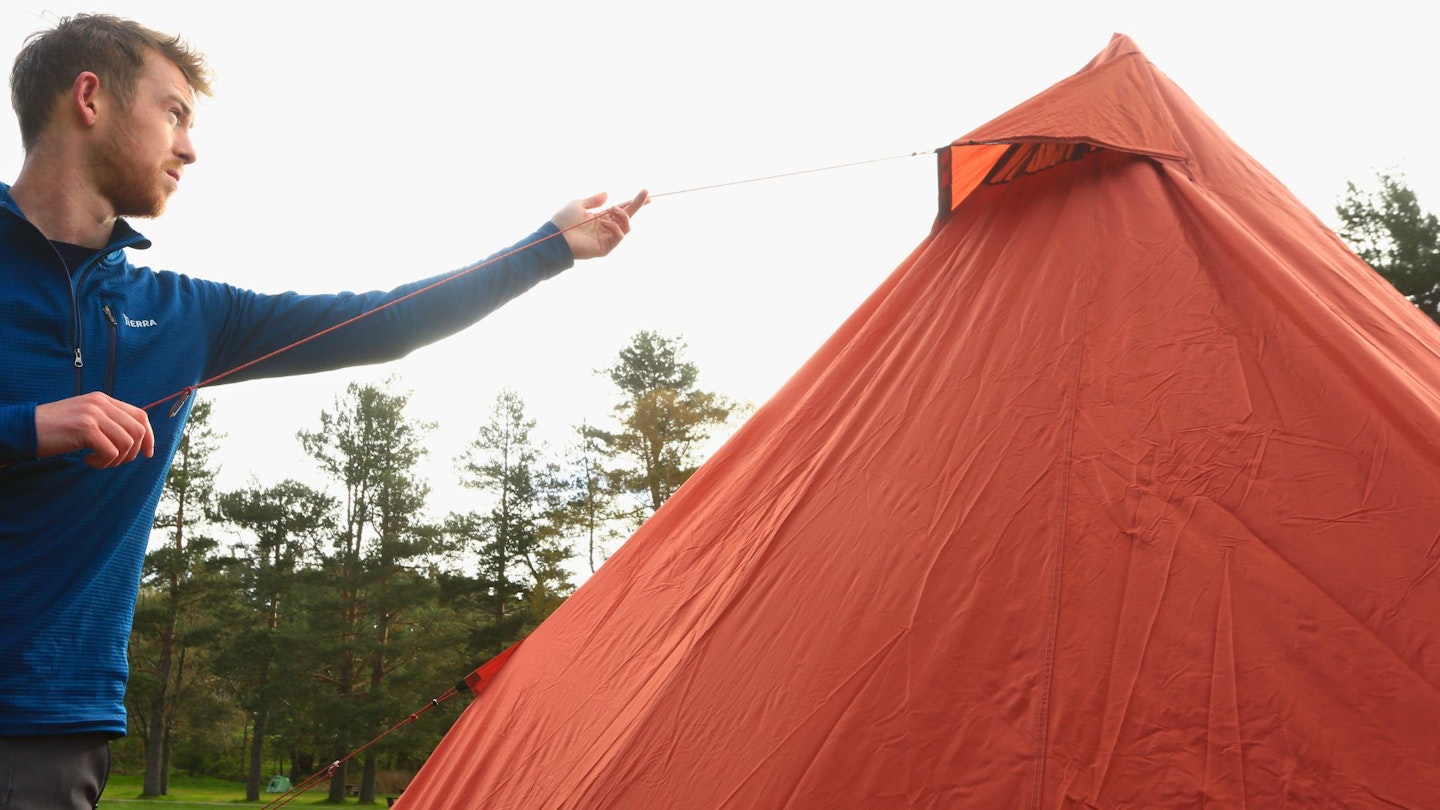
However, when we arrive at price, this is when some of those more mainstream camping brands come out on top. The Thrymheim 5 PU isn’t overpriced in our opinion, but with an RRP of £705 it’s no bargain either.
Meanwhile, Decathlon – a byword for value – can offer you a basic but reliable four-person tunnel tent like the Decathlon Quechua Arpenaz 4.1 for just £200. And if you’re in the market for a £700-odd tent, you can look at bulky but spacious options like the OLPRO Blakedown Breeze 4 or Vango Castlewood Air 800XL.
Verdict

In summary, we think the Nordisk Thrymheim 5 PU is a hugely appealing tent. It’s spacious enough for a family of four (even five if you want), or to act as a basecamp tent for a group, yet thanks to high-end materials, packs down into a bag noticeably smaller and lighter than what a typical family tent of equivalent liveability can offer.
How we tested
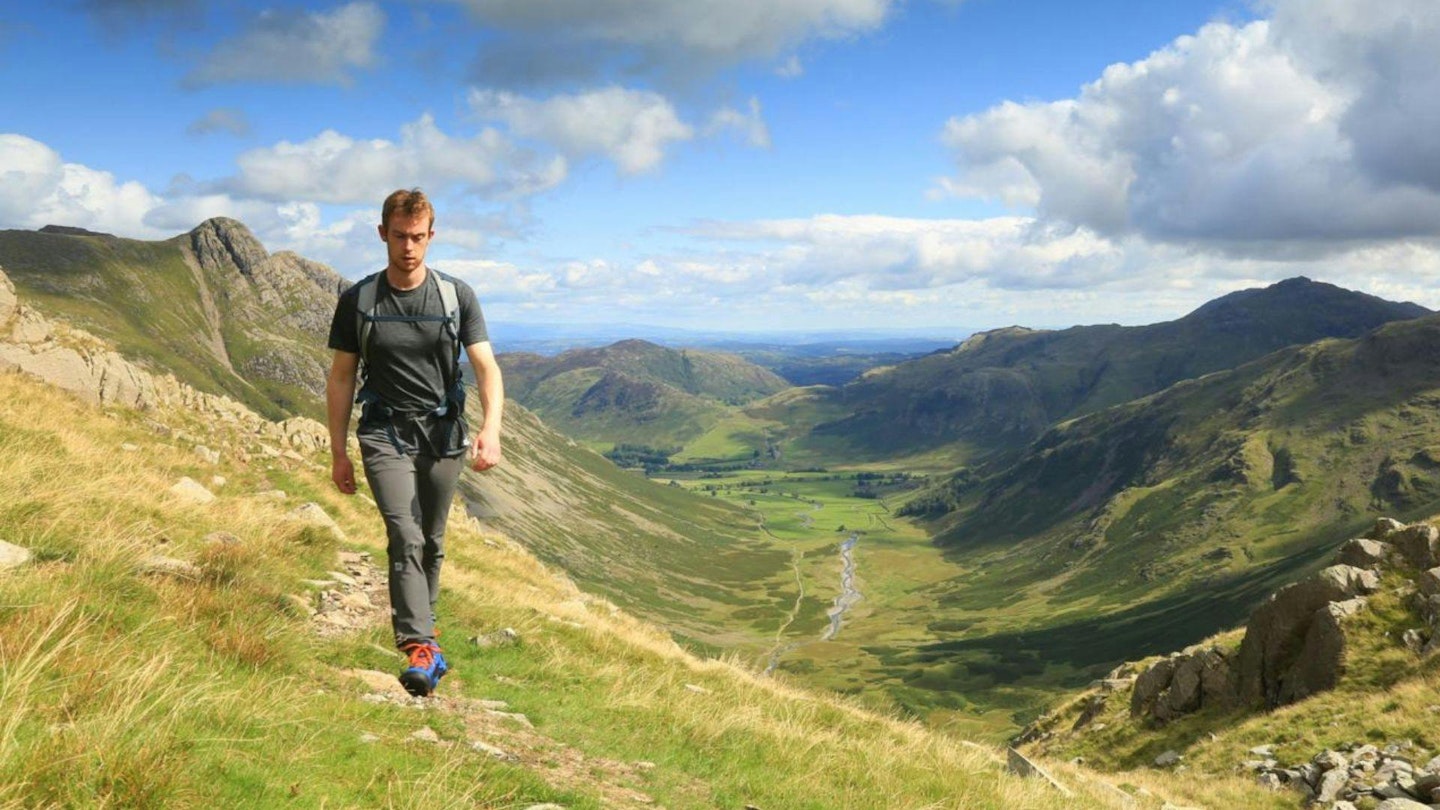
The Nordisk Thrymheim 5 PU was tested and reviewed by Chris Williams, whose main test took place near Glenmore, Scotland in mid-spring.
Chris is a Senior Writer at LFTO and has been with us since 2021, successfully exporting his extensive knowledge of hiking and trekking in his homeland of New Zealand to Europe. He’s also extremely knowledgeable on outdoor gear, having also worked for one of New Zealand’s biggest outdoor gear brands.
